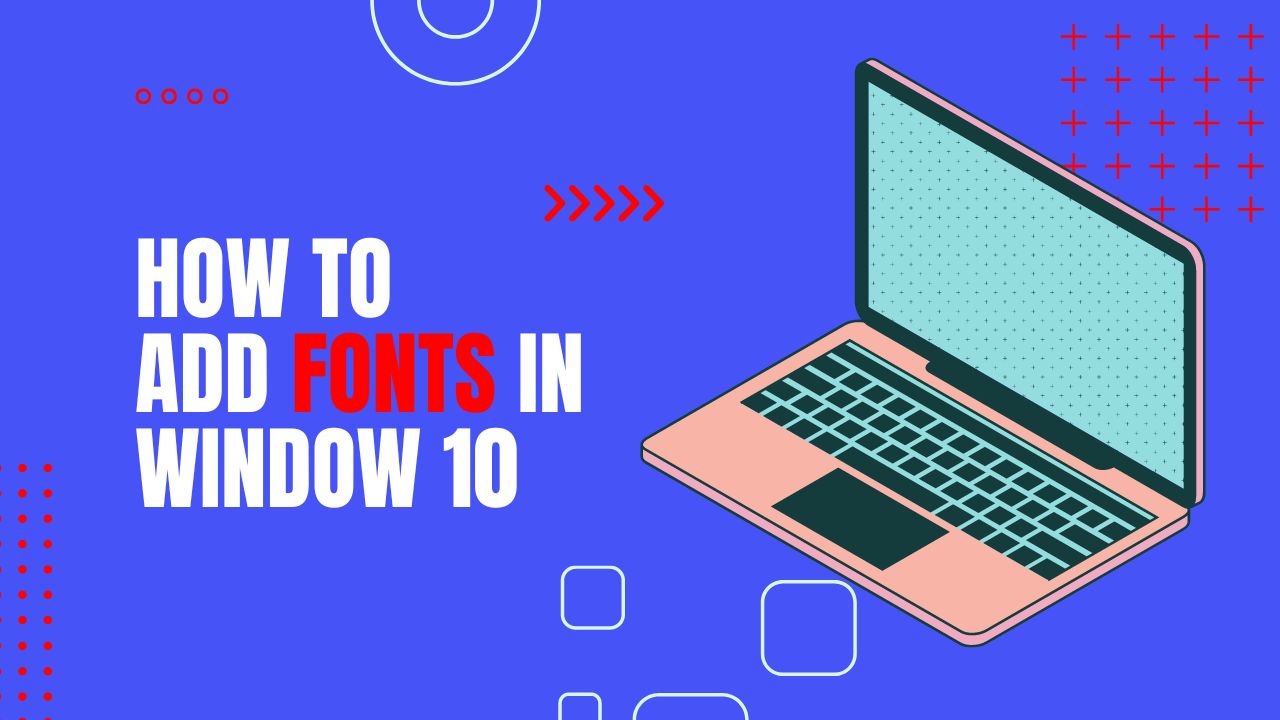Introduction
If you're looking to customize the appearance of your Windows 10 interface or enhance your creative projects, adding new fonts can significantly elevate your experience. Windows 10 offers various methods to add fonts, from utilizing built-in options to downloading fonts from external sources. In this guide, we'll explore step-by-step instructions on how to add fonts in Windows 10, along with essential tips and best practices.
Built-in Font Options
Windows 10 comes with a diverse range of built-in fonts that cater to different preferences and needs. These fonts are readily available for use in various applications. To access and manage built-in fonts, simply navigate to the "Settings" menu, select "Personalization," and click on "Fonts." From here, you can preview installed fonts, adjust font sizes, and manage font settings.
Downloading Fonts from the Microsoft Store
One convenient way to expand your font collection in Windows 10 is by browsing and downloading fonts from the Microsoft Store. To do this, open the Microsoft Store app, search for fonts, and select the ones you want to download. Once downloaded, the fonts will automatically install and become available for use across your system.
Installing Fonts from External Sources
In addition to the Microsoft Store, you can also install fonts from external sources such as reputable font websites. However, it's essential to exercise caution and ensure that you're downloading fonts from legitimate sources to avoid potential security risks. Once you've downloaded the font files, simply double-click on them to install or right-click and select "Install."
Installing Fonts Manually
Alternatively, you can manually install fonts in Windows 10 using the Control Panel. First, download the font files to your computer, then navigate to the Control Panel, select "Appearance and Personalization," and click on "Fonts." Finally, drag and drop the downloaded font files into the Fonts window to install them.
Using Font Management Software
For users with extensive font collections, employing font management software can streamline the organization and usage of fonts. These tools offer advanced features such as font previewing, categorization, and activation/deactivation options, enhancing your font management experience.
Customizing Font Settings
Windows 10 provides robust customization options for font settings, allowing users to adjust font size, style, and other parameters according to their preferences. You can customize font settings through the "Settings" menu or directly within individual applications to ensure optimal readability and aesthetics.
Uninstalling Fonts
To remove unwanted fonts from your system, simply navigate to the Control Panel, select "Appearance and Personalization," and click on "Fonts." From here, you can easily uninstall fonts by right-clicking on them and selecting "Delete." However, exercise caution to avoid deleting essential system fonts, which could lead to instability.
Compatibility Issues and Solutions
Occasionally, you may encounter compatibility issues with certain fonts, resulting in display or formatting problems. To address such issues, ensure that you're using fonts compatible with your system and applications, and regularly update your software to resolve any compatibility conflicts.
Font Accessibility Features
Windows 10 offers accessibility features for users with visual impairments, allowing them to customize font settings for improved readability. You can enable features such as high contrast mode, magnifier, and text scaling to enhance font accessibility and usability.
Best Practices for Font Management
To maintain an organized and efficient font library, consider adopting best practices such as labeling fonts appropriately, backing up font files, and periodically cleaning up unused fonts. By implementing these practices, you can ensure smooth font management and optimize system performance.
Using Fonts Across Applications
Fonts added to Windows 10 can be seamlessly utilized across various applications, including word processors, graphic design software, and web browsers. This ensures consistency in typography and design, regardless of the application or platform you're using.You can use installed fonts across all users. See how to add multiple users in window 10.
Font Licensing and Legal Considerations
When using third-party fonts, it's crucial to adhere to licensing terms and agreements to avoid copyright infringement. Familiarize yourself with the licensing restrictions associated with each font and ensure compliance with legal requirements when using fonts for commercial or personal projects.
Enhancing Typography in Windows 10
For enthusiasts interested in elevating their typography skills, Windows 10 offers advanced features and techniques for enhancing text appearance. Experiment with font pairing, kerning, and other typographic elements to create visually appealing designs and documents.
Check this video tutorial:
Conclusion
Adding fonts in Windows 10 opens up a world of possibilities for customization and creativity. Whether you're a design professional or an everyday user, exploring different fonts and typography options can enhance your computing experience and elevate the visual appeal of your projects.
FAQs
Can I use custom fonts in Microsoft Office applications?
Yes, once installed, custom fonts can be used in Microsoft Office applications such as Word, PowerPoint, and Excel.
Are there any restrictions on using downloaded fonts for commercial projects?
It depends on the font's licensing terms. Some fonts may have restrictions on commercial use, so it's essential to review the licensing agreement before incorporating them into commercial projects.
Can I share installed fonts with other users on the same computer?
Yes, fonts installed on a computer are typically available for all users unless restricted by system settings or permissions.
What should I do if a font I installed is not displaying correctly in certain applications?
Try restarting the application or your computer to see if the issue resolves. If not, ensure that the font is compatible with the application and consider reinstalling or troubleshooting the font files.
Is it possible to revert to default system fonts if I no longer want to use custom fonts?
Yes, you can revert to default system fonts by uninstalling or deactivating custom fonts through the Control Panel or font management software.

